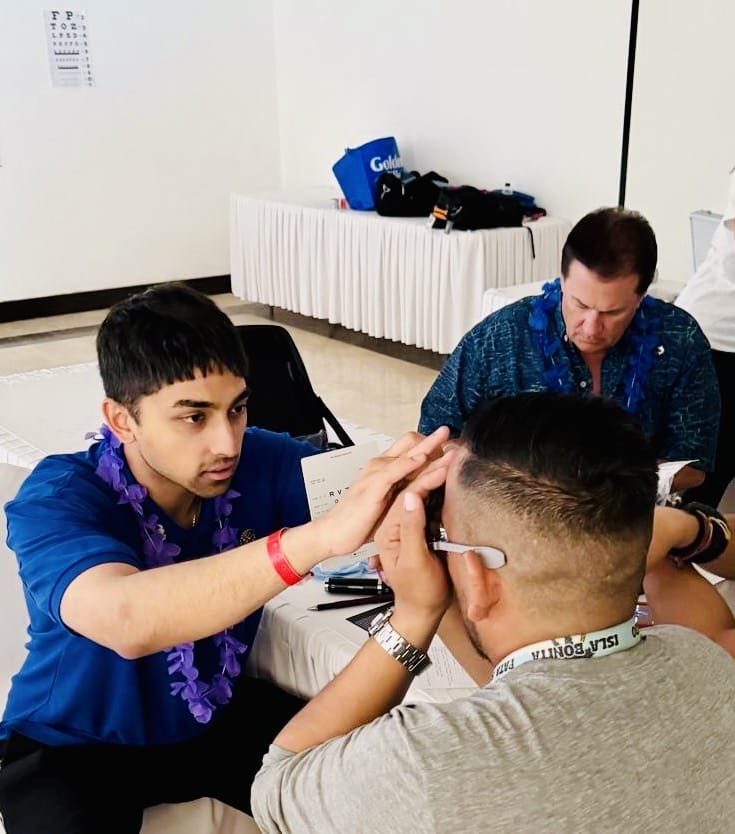WesternU tests Macular Pigment Reflectometer prototype
More than 10 million Americans are affected by age-related macular degeneration, a condition that robs older adults of their central vision and affects their quality of life.
Western University of Health Sciences is testing the commercial prototype of a device that could provide more accurate, objective calculations of macular pigment optical density (MPOD) and lutein and zeaxanthin optical densities (L-OD, Z-OD).
A WesternU team led by College of Optometry Professor and Director of Research Pinakin Davey, PhD, OD, FAAO, is working closely with ZeaVision to develop clinical protocols for ZeaVision’s Macular Pigment Reflectometer (MPR).
Measuring MPOD can be a biomarker that helps identify individuals at risk of chronic ocular and systemic diseases, Davey said.
“Measuring individual components of macular pigments allows you to tailor therapy for a patient’s needs, and this can revolutionize individualized medicine in age-related macular degeneration,” he said.
Two MPR studies were presented at the 2018 Annual Meeting of the Association for Research in Vision and Ophthalmology (ARVO) in Honolulu, Hawaii April 29-May 4, 2018. “Evaluation and comparison of objective and psychophysical techniques to measure macular pigment optical density,” is by Davey, WesternU Graduate College of Biomedical Sciences graduate Angeline Ngo, MSMS ’18, College of Optometry Associate Professor Frank Spors, EuroOptom, MS, PhD, FAAO, College of Optometry Director of Program Assessment Stephanie Amonoo-Monney, MPA, AALHE, Dennis Gierhart, chief scientific officer from ZeaVision, and Scott Rowe from Rowe Technical Design.
The team evaluated the effectiveness of the MPR compared to QuantifEye MPSII, a subjective heterochromatic flicker photometer. The current clinical standard MPSII device needs patient response and input, which is not ideal and may be prone to errors, according to the study. The macular pigment reflectometry (MPR) offers a fast and objective method of analyzing MPOD. This study shows that MPR has good repeatability and pupillary dilation is not needed to obtain good repeatable data.
A separate study, “Non-invasive, in-vivo measurement of lutein and zeaxanthin in the central retina,” by Davey, Gierhart and Rowe, examined MPR effectiveness in calculating lutein and zeaxanthin optical densities (L-OD, Z-OD), with the intent to create protocols that can be utilized in clinics and subsequent studies.
“This is the first time a clinical device is close to being available that can measure individual composition of human retina and measure its carotenoid levels in a fast and objective fashion without input from the patient,” Davey said.
The study showed the MPR device can measure the L-OD and Z-OD non-invasively, in-vivo, in about 30 seconds. At this point in instrument development, pupillary dilation is necessary to obtain repeatable values of L-OD and Z-OD.



